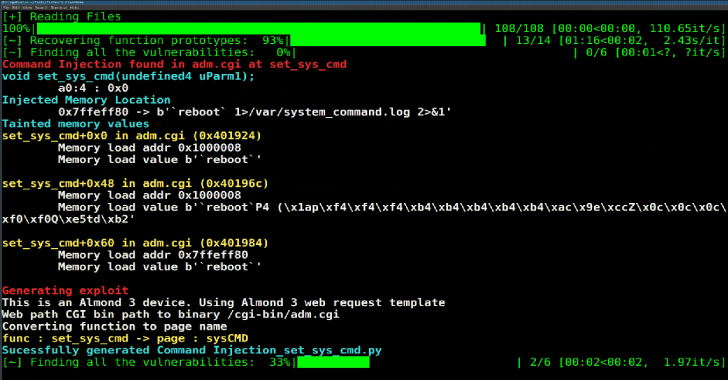BDF is a Python tool designed to spin-up pseudo random vulnerable Android applications for vulnerability research, ethical hacking, and pen testing Android app practice.
- To get started, download the dependancies and run
BrokenDroidFactory.py, it’s as simple as that! - Create a pseudo random Android APK that contains an assortment of vulnerable and issue prone code.
- After run, a
README.mdfile is created detailing the app’s issues and vulnerabilities.
Getting Started
Installation
After cloning the repository all BDF dependencies can be installed manually or via the requirements file, with:
pip install -r REQUIREMENTS.txtIn addition to the above, you will also need a copy of the Android SDK. If you do not have this already it can be downloaded here by either downloading it via Android Studio or downloading it via the command line tools. To ensure that BDF picks up your SDK path perform one of the following:
- Save your SDK path to
C:\Users\<username>\AppData\Local\Android\Sdkon Windows. - Provide the path to your SDK to BDF with the
-sparamiter. - Provide the path to your SDK when prompted by the command line.
- Create a file at
Broken-Droid-Factory/demoapp/local.propertieswith the contentssdk.dir=<path to your SDK> - Open the Android project
demoappin AndroidStudio, it will then create a local file calledlocal.propertiesdetailing your SDK path.
BDF has only been tested on Windows 10.
Usage
Run BDF with Python:
python BrokenDroidFactory.pySeveral optional pramiters can be provided to BDF, use -h to see a full list:
optional arguments:
-h, --help Show this help message and exit.
-o OUTPUT, --output OUTPUT
The output directory for the compiled APK to be saved
to.
-t TEMPLATE, --template TEMPLATE
The path to the template app. Do not alter unless you
know what you're doing.
-s SDK, --sdk SDK The path to your local Android SDK.
-c CHALLENGE, --challenge CHALLENGE
The desired challenge level for the created APK.
-v, --verbose Increase output verbosity.After running BDF to completion you will be left with 2 files in the output directory (out if not provided). A README.md file detailing the workings and the types of challenges in the app, and an .apk file.
Types Of Challenges
Use BDF to create vulnerable and issue prone Android applications in the below categories:
- Broken Crypto: Insecure Algorithm Usage
- Broken Crypto: Predictable Key Material
- Exploitable Exported Activities
- Insecure Data Storage
- Sensitive Data In Memory
- Tapjacking
- Task hijacking
Creating Your Own Patchers
Patchers are used by BDF to modify a template application source and add vulnerable and issue prone code to it.
A patcher must have several key aspects and have this purpose in mind.
However, outside of this how patchers are implemented is quite flexible and modular.
- A patcher should be saved to the
patchersdirectory. - A patcher should inherit
patcher_interface.patcher - A patcher should have a member variable of
difficultyset to an int value between 0 and 10 – where 0 means it provides no challenge and is used to add variability to the app, and a number higher than 0 denotes it’s difficulty score to complete (with the higher the score the more difficult it is). - A patcher should have a
patchfunction (of which is automatically run when the patcher is called by BDF) and should return a string based on what the patcher has done. - A reference to your created patcher class should be added to the
patcher_listlist variable inBrokenDroidFactory.py










.webp)

%20Works.png)




